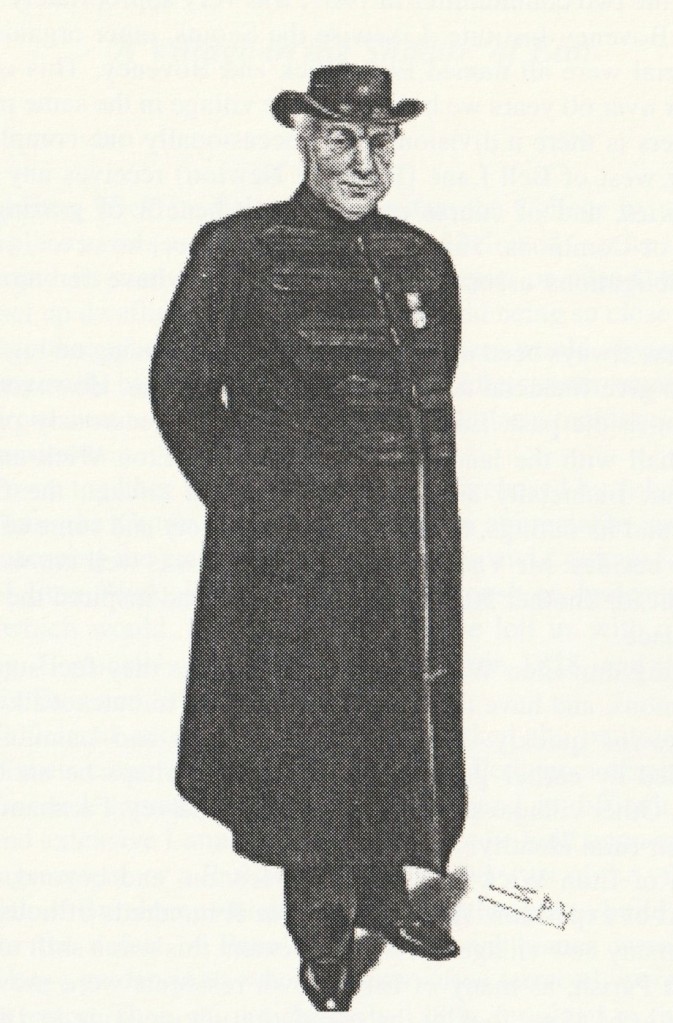Published in Windlesora 18 (2000)
© WLHG

Arthur Robins was the incumbent Rector at Holy Trinity Church, Windsor from 1873 until 1899. He lived in Holy Trinity Rectory, Alma Road (now the Frogmore Hotel), and was chaplain to HM Household Troops and Honorary Chaplain in Ordinary to Queen Victoria. His curates were Rev. George Hayward and H L Warneford and they also served St Saviour’s Church, Bier Lane. According to the list of clergy displayed in the church, there were 14 curates between 1873 and 1899.This high number of assistant clergy may be due to the posting of Army Chaplains to the barracks.
The regiments stationed in Windsor attended this church, both Life Guards from Combermere and Foot Guards from Victoria Barracks. On pre-war Sunday Church parades two columns of marching soldiers, each with its band, could be seen converging on the Garrison Church.
As chaplain to the Household Brigade, he was both popular and vigorous, becoming known to them as their bishop. He was a “man of weight”, as his flock found at Christmas time when he was carried round the barrack room; yet he claimed to have preached the shortest sermon on record, finishing easily in two minutes 58 seconds.
He was not universally popular with his neighbours, who included Mayor Shipley at one time, for he made bold and constant attacks on the slums of the Royal Borough, no doubt particularly those in Bier Lane, where he served St Saviour’s Church. He was not alone in his criticism, for Queen Victoria also wrote to the Mayor on the subject.
He was reputed to have the air of a cheerful optimist, but (so deceitful are appearances) he was said to have had times of deep depression. It was said of him “He has many friends, of whom many think his vanity, which is an unknown quantity, is excusable. Altogether he is a parson with a considerable knowledge of the world, who is perhaps as well able to take care of himself as of his flock”.
On January 14th 1892 Albert Victor, Duke of Clarence, eldest son of the future King Edward VII and Queen Alexandra, died. As chaplain to his grandmother, Queen Victoria, the Rector collected funds for a memorial window, the first to be erected to the memory of the Duke of Clarence. These magnificent windows with a Resurrection theme were designed by Mr F W Winter of London and made by Messrs Sharp of 6 Sheet Street Windsor, who had taken over the Royal Windsor Stained Glass Manufactory of Old Windsor. They are at balcony level of the north transept.
The designs that were approved by Queen Alexandra were:
The Resurrection of our Lord
Damsel I say unto thee arise
Young man, I say unto thee arise
Lazarus come forth.
They form a three light window, the centre one being eighteen feet in height and containing two subjects, the upper one of the Resurrection and the lower one of Lazarus. The lights on either side are about fourteen feet in height, The one on the left is the raising of the centurion’s daughter, and on the right is the raising of the widow’s son. Between the lights are two scrolls “In Memorium Albert Victor Christian Edward of Wales K.T., K.P. Duke of Clarence and Avondale. Born 8th January 1864 Died 14th January 1892. Thy Will be Done”
The Prince of Wales paid a private visit to Holy Trinity on Friday 12th August 1892 to unveil the window. He went to the gallery to inspect it while the organist, Mr H R Couldrey, played O Rest in the Lord. Prayers were read by the rector and His Royal Highness drove to the Albert Memorial Chapel in St George’s where the Duke’s remains were laid.
When a striking clock was added to the church tower in 1897 to celebrate her Diamond Jubilee, the Queen was due to make an inspection of the clock . As she was late, the Rector moved back the hand of the new clock but the Queen chided him, “I see that your clock is behind time”.
As thanksgiving for the ministry of Arthur Robins, the Soldiers’ Bishop, the Baptistry was screened off in 1901 and the inscription as a frieze below the ceiling reads:
“To the Glory of God and in the Memory of Arthur Robins MA for upwards of years Rector of this Parish. Obit 24 Dec. 1899”. The font was presented by the NCOs and men of the Grenadier Guards.
Gordon Cullingham
Bibliography
Holy Trinity Church, Windsor.
Royal Windsor Stained Glass.
Windsor and Eton Express.
The Windsor Magazine 1907
The author wishes to thank Rev. Jonathan Cruickshank, team vicar of Holy Trinity for
his help.